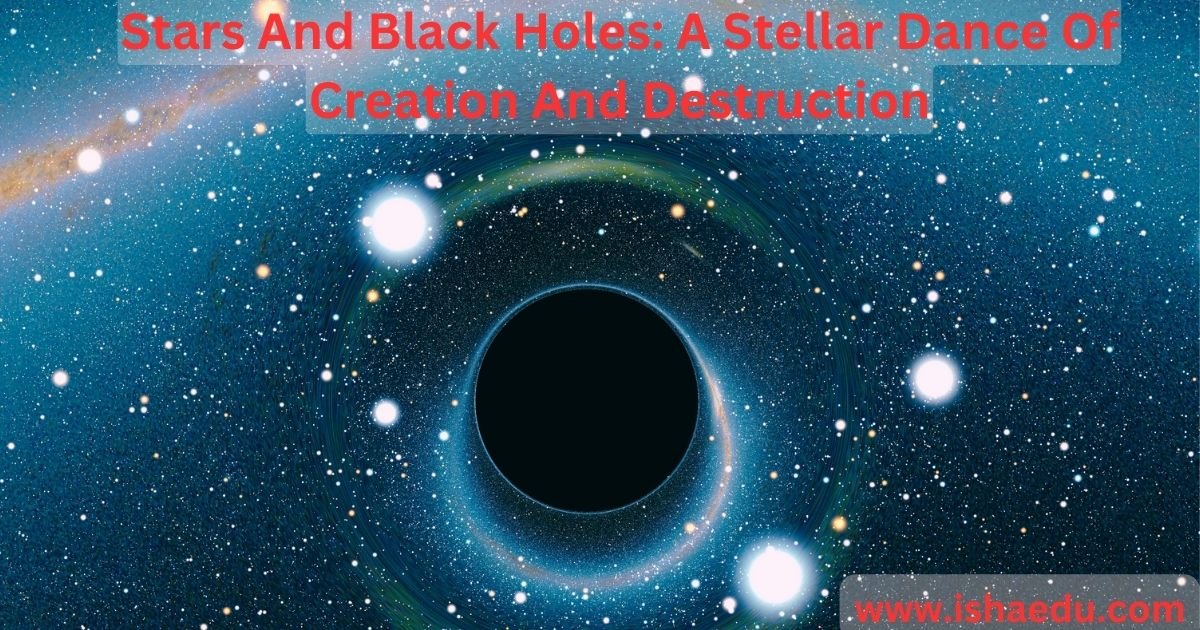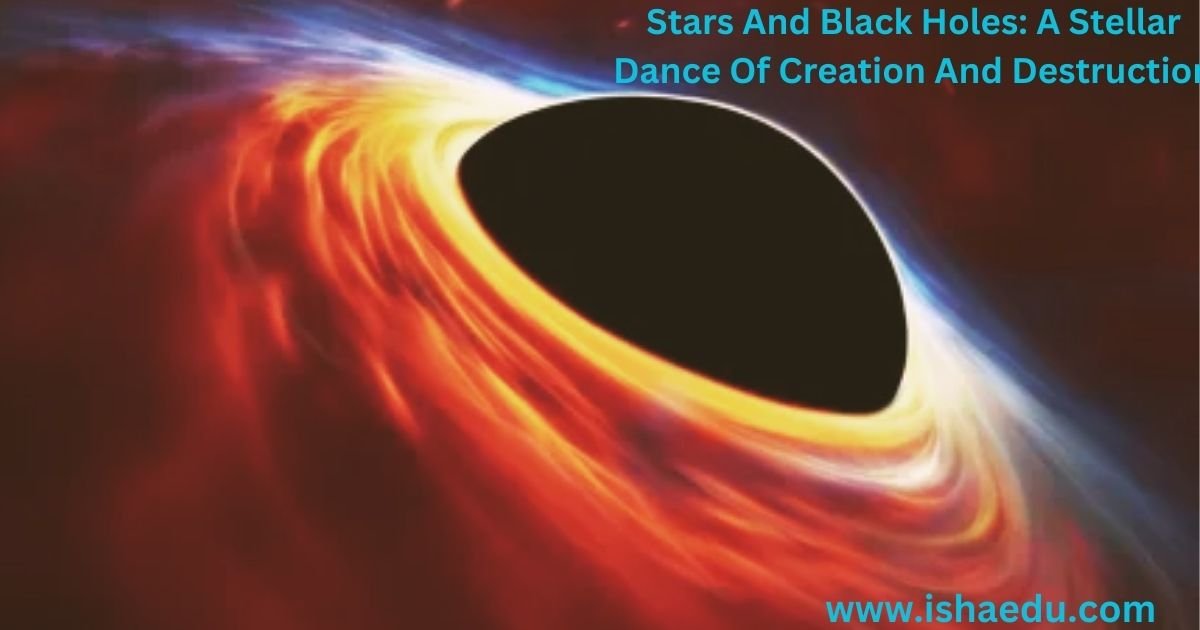Stars And Black Holes: A Stellar Dance Of Creation And Destruction

Stars And Black Holes: A Stellar Dance Of Creation And Destruction
Stars and black holes, each playing a distinct role in the cosmic drama, are integral components of the universe’s grand tapestry. From their inception in the vast cosmic nurseries to the mysterious realms beyond the event horizon, their intertwined destinies weave a narrative of creation and destruction.

Stellar Origins:
Stars emerge from the cosmic cradles of nebulae, where gravity molds dust and gas into luminous spheres. The fusion within a star’s core generates energy, illuminating the cosmos. These celestial giants, varying in size and lifespan, range from the enduring brilliance of our Sun to the short-lived brilliance of massive stars.
Stellar Endings:
As stars exhaust their nuclear fuel, their fates diverge. Smaller stars gracefully shed outer layers, leaving behind white dwarfs. In contrast, massive stars culminate in spectacular supernovae, birthing remnants that may collapse into enigmatic entities known as black holes.
Black Holes: Giants of Gravity:
Black holes are cosmic behemoths, their gravitational pull so intense that not even light can escape. Their presence remains veiled, detected only by the impact on surrounding matter. Proximity to a black hole subjects objects to spaghettification, a gravitational distortion of formidable magnitude.
The Black Hole’s Event Horizon:
The event horizon, a cosmic point of no return, encapsulates a black hole. It isn’t a tangible surface but a region where escape velocity surpasses light speed. Once traversed, anything succumbs to the black hole’s inescapable grasp, disappearing from the observable universe.
Beyond the Singularity:
At a black hole’s heart lies the singularity, a realm of incomprehensible density where conventional physics crumbles. This enigmatic core raises profound questions about the nature of space and time, challenging our understanding of the cosmos.
The pursuit of knowledge about stars and black holes is an ongoing odyssey, sparking curiosity and inspiring scientific inquiry. These cosmic entities, with their veiled secrets, beckon humanity to explore the frontiers of the universe, promising revelations about the origins and destiny of existence. The cosmic dance between creation and destruction unfolds on the grand stage of the cosmos, inviting us to witness and comprehend its celestial choreography.

FAQs
What is the black hole in stars?
A black hole is a super-dense region in space with gravity so strong that nothing, not even light, can escape. They form when massive stars collapse at the end of their lives. Their immense gravity can have dramatic effects on their surroundings, but we can’t directly observe them since light can’t escape. Black holes are still mysterious objects, but scientists are constantly learning more about them and their role in the universe.
Will a star become a black hole?
Whether a star becomes a black hole depends on its mass. Here’s a breakdown:
- Smaller stars (up to about 8 times the mass of our Sun): These stars typically end their lives as white dwarfs, which are very dense objects but not dense enough to be black holes.
- Massive stars (more than about 8 times the mass of our Sun): When these stars run out of fuel, their cores can collapse under their gravity, creating a black hole. This collapse also triggers a powerful explosion called a supernova.
So, not all stars become black holes. It depends on how much stuff they pack into their core.
How big is a black hole star?
Stars and black holes are distinct objects. Stars come in various sizes, but even the biggest ones are dwarfed by black holes. Black holes don’t have a definite size, but their immense gravity creates an “event horizon” where nothing, not even light, can escape. Stellar-mass black holes are smaller than stars, while supermassive black holes at galactic centers are much larger.
Why dead star is called a black hole?
Massive stars can become black holes after they die in a supernova explosion. Their leftover core gets crushed by gravity, becoming super dense and creating a region where even light can’t escape. That’s why it’s called a black hole! But not all dead stars are black holes, only the biggest ones have enough gravity to pull off this feat.
What is inside a black hole?
Scientists can’t say for sure what’s inside a black hole since nothing can escape it. They have ideas based on what they know about physics and what they observe around black holes. These ideas include:
- An incredibly dense core, so dense it challenges our understanding of physics.
- Super-hot gas swirling around the black hole.
- A singularity is a theoretical point where all the mass is concentrated, where physics as we know it breaks down.
How do black holes die?
Black holes don’t die in the traditional sense, but they shrink and lose mass very slowly over incredibly long periods. This happens because they emit tiny bits of energy called Hawking radiation. Imagine a black hole like a giant ice cube slowly melting in the heat of the universe, but much, much slower! It takes trillions of years for even the biggest black holes to shrink significantly. While the very end is still mysterious, scientists are learning more about how black holes evolve and interact with the universe.
Do white holes exist?
White holes are cool ideas in physics, but they’re probably not real. They’re the opposite of black holes, shooting out matter instead of sucking it in. But they break some rules of physics we know, and we haven’t seen any evidence of them in space. So while they’re fun to think about, they’re likely just figments of our imaginations.
Are black holes hot?
Black holes pack a surprising temperature punch:
- Super hot: Material swirling near a black hole reaches scorching millions of degrees.
- Super cold: The black hole itself, though, is frigid, near absolute zero.

Join Us :
Click Here To Get Technology And Entertainment Notification:




